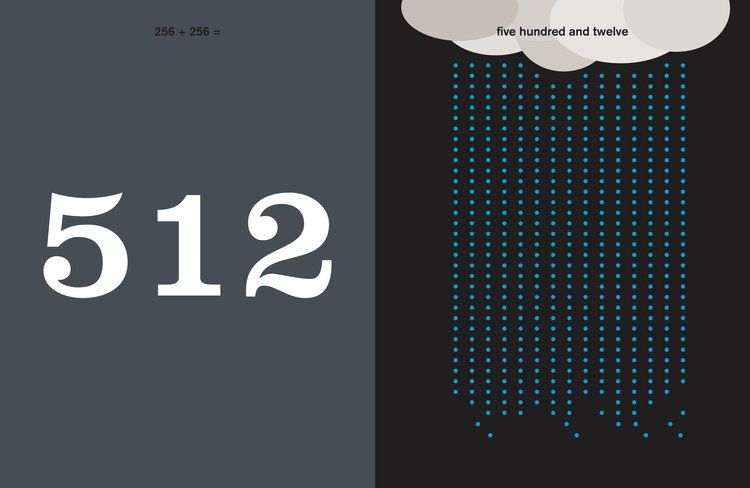A Million Dots – at a glance
The School Reading Lists’ five word review: Potential goldmine of teaching ideas.
Children’s book title: A Million Dots.
Children’s author: Sven Völker.
Genre: Children’s non-fiction.
Published by: Cicada Books
Recommended for children aged: 4-11.
First published: Hardback 2019.
ISBN: 9781908714664
This children’s book is ideal for: classroom activities and maths topics in KS2 will benefit from this eye-catching children’s non-fiction book. Sven Völker’s clever presentation and sharp graphics will pose questions for enquiring minds to solve and consider in greater depth.
To see the latest price or order, click on the book cover image. As an Amazon Associate schoolreadinglist.co.uk earns from qualifying purchases.
Our review:
This is a simply presented but clever book. Starting with one large green dot on the first page, on the second page there are two dots, and the third page the number of dots doubles again to 4 until the final and 44th page – an elongated fold-out spread – there are a million, very small, dots.
The number sequence: 1 – 2 – 4 – 8 – 16 – 32 etc … will no doubt stir memories for parents who remember computers in the 1990s. The number sequence is the same one that flashed up when a PC booted and checked the RAM.
On one level this book is ideal for younger children in EYFS and KS1 to visualise doubling each time a page is turned. (The actual calculations are written in both numbers and words, as well as pictures – which is useful for children who struggle with maths.)
But extend this to turning back a page and the book then illustrates halving. Moving on to older children in KS2, and the same illustrations become a useful resource to show the relationship between cumulative addition and multiplication, and also repeated subtraction, division and fractions.
Taking it further still, the sequence of numbers, starting at 1 and doubling each time, is the type of number sequence which often crops up in GCSE exams (finding the ‘nth’ term in a geometric sequence) or KS3 and 4 maths investigations (can the pupil work out an algebraic formula to represent the sequence?) This is one of those mathematical concepts which, in schools, students often approach with misconceptions, or just find deadly dull and difficult to conceptualise.
This book is a great starting point to make these more difficult ideas more exciting and easier to picture. Bright children could be set challenges to investigate and present solutions. For example, the teacher might tell a Y9 class, “My 7-year-old loves this book! But he wants to know what number would be on page 40. Can you work it out for him? Also, (he’s a demanding child) he wants to know which would be the first page with over 1 billion dots. Can you show me how you know which page number that would be?”
The book could also be an impetus for investigating geometric sequences – either by drawing as dots, drawing as a graph, using as a practice situation for using a scientific calculator, or converting to actual units or concepts – for example, cells, microbes, epidemics, population or plastic proliferation or viral social media posts.
The bold and abstract artwork also helps children consider what the numbers might represent. The first green dots might just be dots; or are they trees? Laters dots might be simply dots; or they could be apples? Where are the trees, who picked the apples, how much do the apples sell for? The pictures are just abstract enough to encourage imagination and invention, and allow children and teachers to create word problems and real-life maths situations to apply to each spread of dots on the page.
Not only that, but the illustrations are a potential godsend for teachers looking for topic-based activities that link maths and art. Imagine creating a whole year group display of dots to illustrate halving and doubling, or number sequences. Can you create a self-portrait using pointillism? Imagine trying to create a million dots with a whole school art display. Imagine asking a class to create a display of unique pictures, each one composed using the same number of dots. Or create a wall display or artwork using a dot to represent each person in a school, grouped into classes, or year groups, or houses, or sports teams – or all of these in combination.
Our verdict
This book is an interesting maths-related picture book that would be at home in any KS1 library. But, with imagination, it’s much more than that – difficult algebraic concepts, greater depth investigations, and cross-curricular art displays can all be brought to life using A Million Dots.
Many thanks to Cicada Books for a review copy.
Something else to consider: BBC Children in Need’s Pudsey uses spots to help raise charity donations. This book might spark some whole-school ideas!
If you like this book you might also like If by David J Smith, Just a Second by Steve Jenkins, The Number Devil by Hans Magnus Enzensberger, Great Estimations by Bruce Goldstone and You Are Stardust by Elin Kelsey.
Please respect copyright and don’t copy or reproduce our content. Sharing on social media or linking to our site’s pages is fine. Thanks. This page was first published on Sep, 16 2019 and last updated on .


